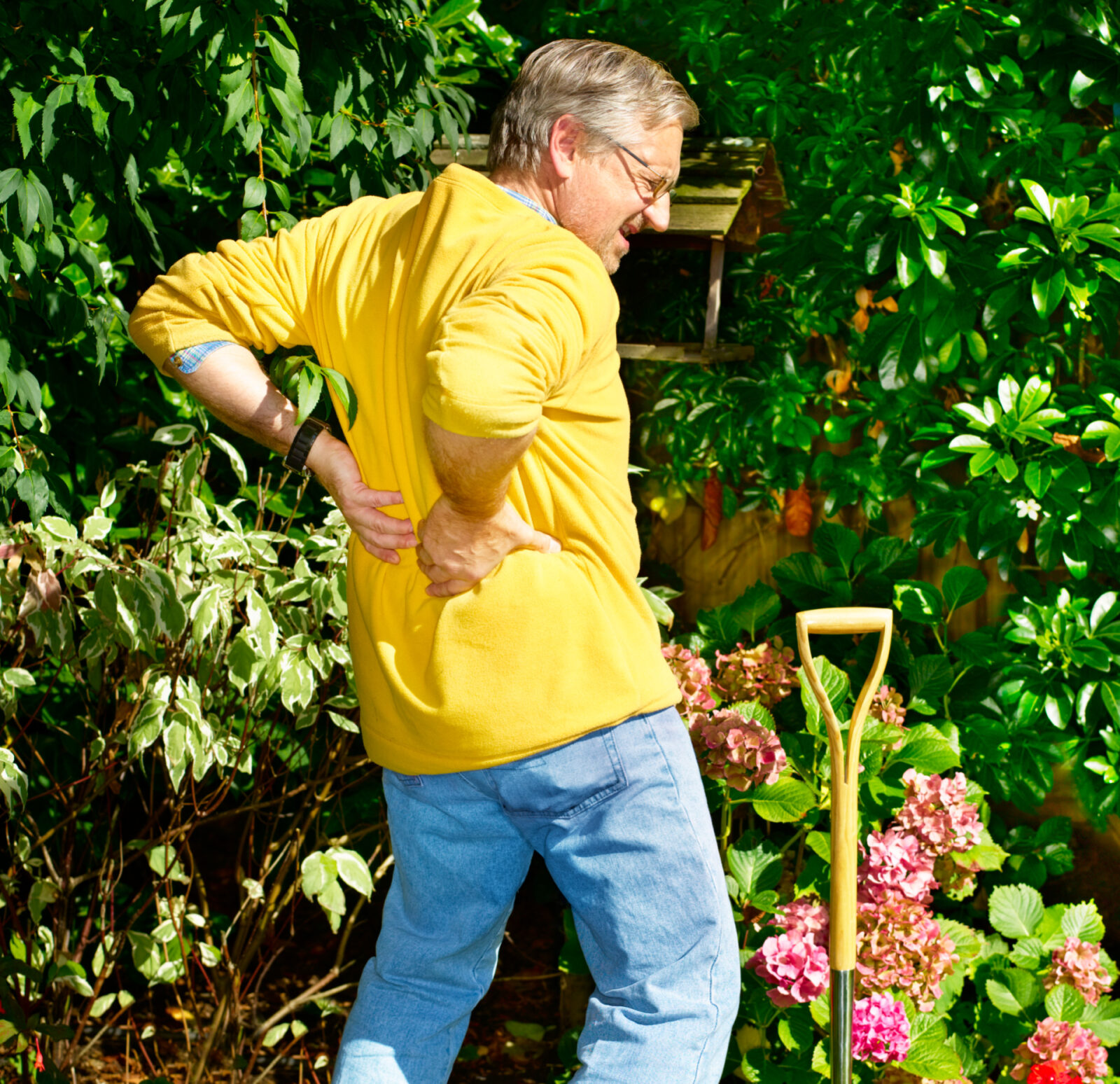
You walk out into the garden, it’s a sunny mid-spring morning, the sun is shining and you’re ready and raring to get planting. Dressed in your full gardeners kit, boots, long-sleeved shirt, baggy jeans, gloves hanging precariously out of one pocket and secateurs in the other. Hat on… it’s go time.
You head over to the first pot to be shifted but forget that the rain has made the soil inside heavy, much heavier than you’re physically and mentally prepared for.
You stand too far away from the pot, with your feet in a position that doesn’t support the intended task. You round through your lower back, droop the shoulders forward, and clasp the edges of the pot, heaving forcefully.
The pot doesn’t move. Your shoulders are already at their maximum stretch rendering their level of support a 0 out of 10. Your slightly off-centre foot position means that your centre of mass is now in front of your hips and the bulk of the force is going to be transferred to your rounded lower back…cue wince.

Now, although the spine is designed to be stiff, mobile, strong, robust, flexible, and durable all at the same time, there is only so much the muscles and structures that support it can do when the odds are stacked against them, especially if it’s a repetitive or chromic pattern of behaviour.
In the example above, we could highlight the role of the shoulders and muscles of the back, the importance of stable foot positioning and creating a base of support, the massive contribution that the core muscles play in transferring force through the body, and the list goes on.
The one thing I do want to delve into a little deeper is the role of the hips and, in particular, how learning to hinge from the hips could be the difference between chronic back pain and endless blissful mornings in the garden.
The hip hinge is a movement that allows us to maintain a relatively neutral spine whilst we shift our hips back behind our feet and bring our chest down towards the floor. What is actually happening is we are using the muscles that flex our hips to pull our spine forward whilst rotating our pelvis around the heads of our femurs (upper leg bone).
Try this. Hold something light, like a book, behind your tailbone with both hands. Bend your knees slightly but then don’t allow them to flex or extend any further. Now push that book back behind you as far as possible using your bottom. Try it a few times and focus on keeping your spine as straight as possible. This doesn’t mean vertical, it means straight. It has to lean forward as you shift your bottom backwards.
If you felt the muscles behind your legs tighten up and felt like you were shifting your weight back towards your heels then you are on the right track.
Over the years, especially the last few, working pretty much exclusively with over 50s, I have seen how this simple movement pattern change or re-education has made a difference in people’s lives. By learning to shift the hips back, rotate the pelvis over them, and maintain a strong and stable spine when picking things up, we are keeping our centre mass right over our feet, transferring the force production from our lower back to the big muscles of our hips and legs and moving the way we were brilliantly designed to.
The next time you’re faced with picking up something heavy or putting it down, try to remember, that it’s all in the hips.
IMPORTANT LEGAL INFO This article is of a general nature and FYI only, because it doesn’t take into account your personal health requirements or existing medical conditions. That means it’s not personalised health advice and shouldn’t be relied upon as if it is. Before making a health-related decision, you should work out if the info is appropriate for your situation and get professional medical advice.